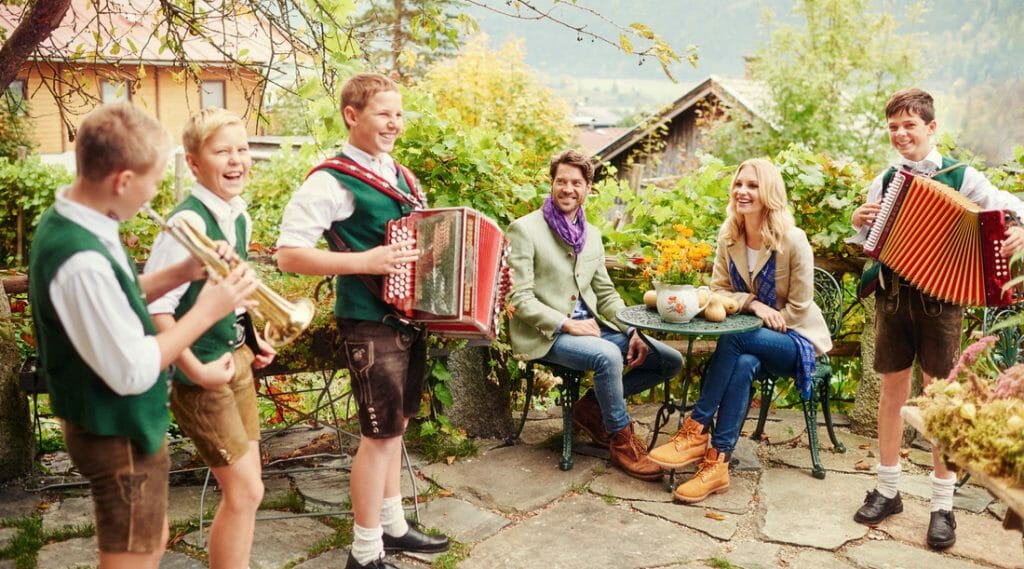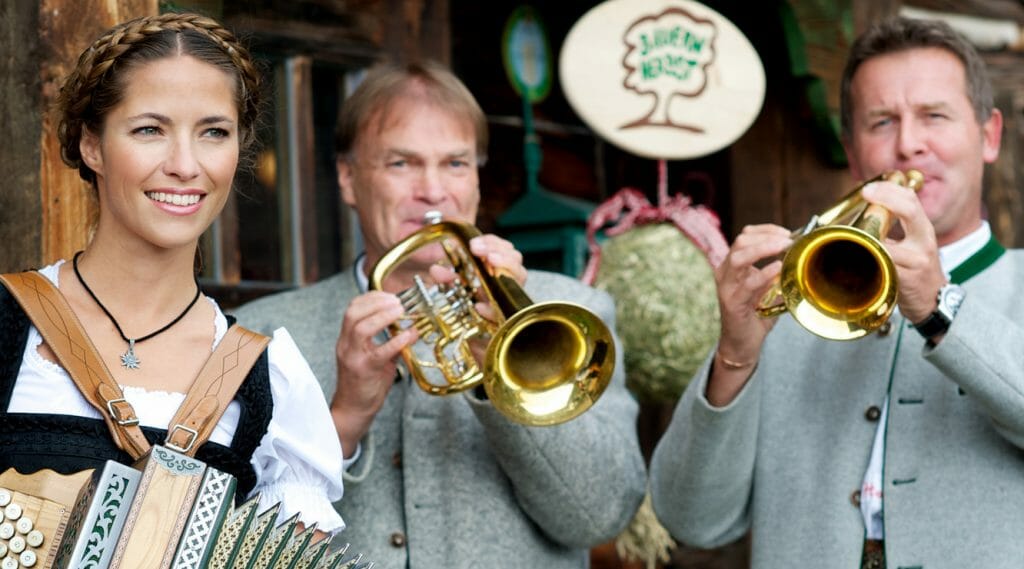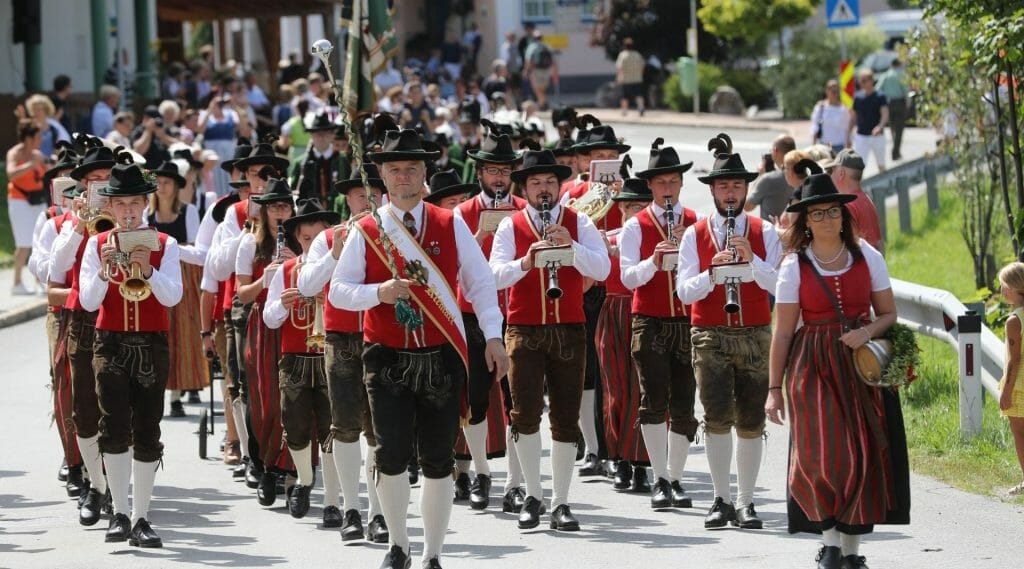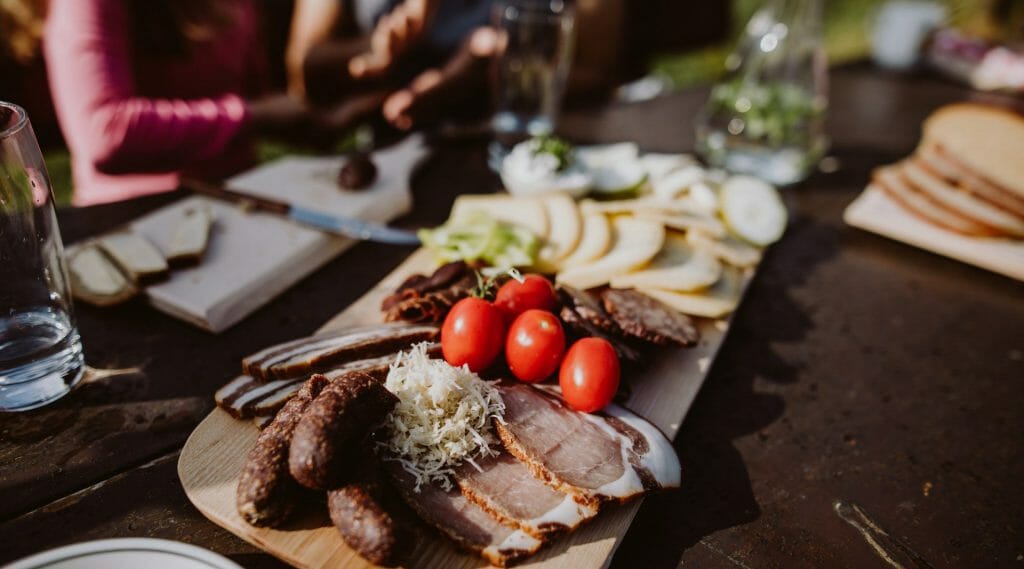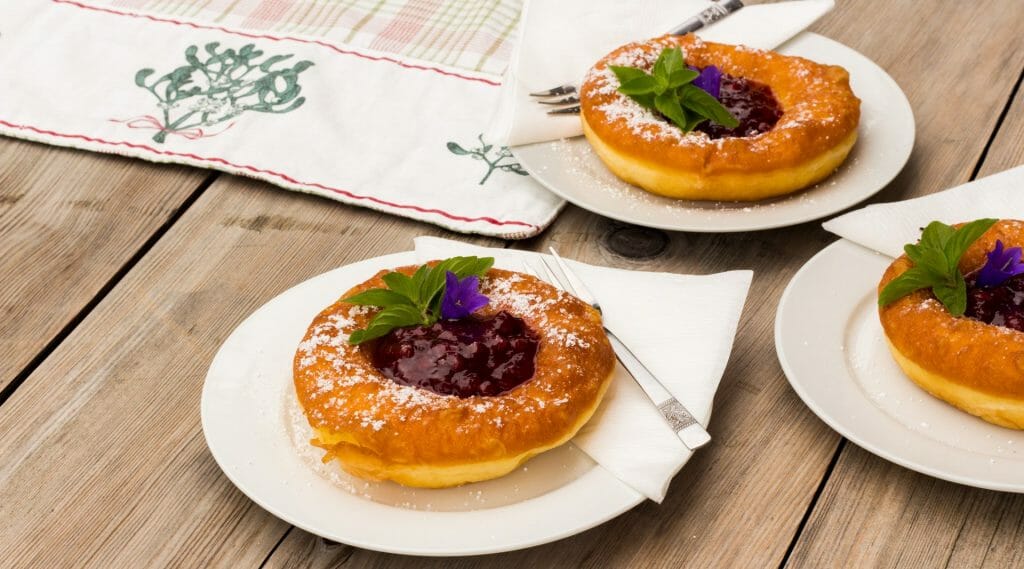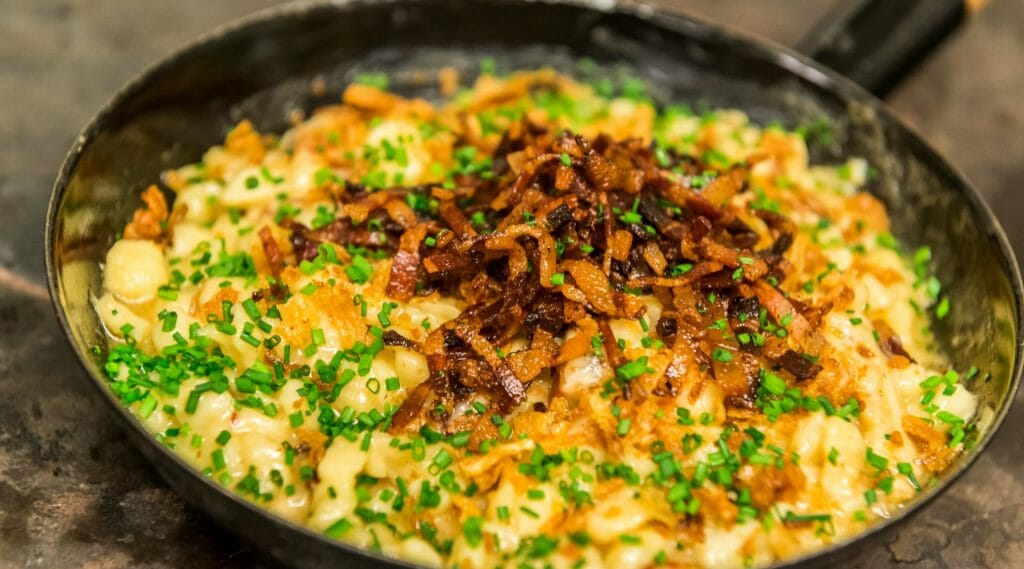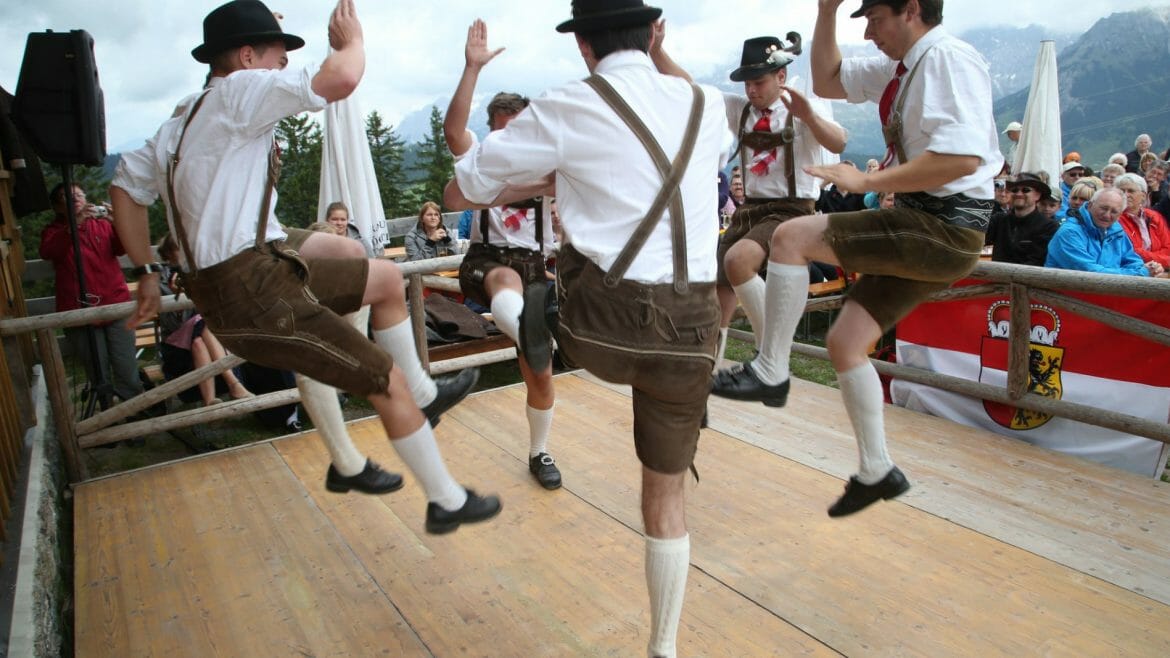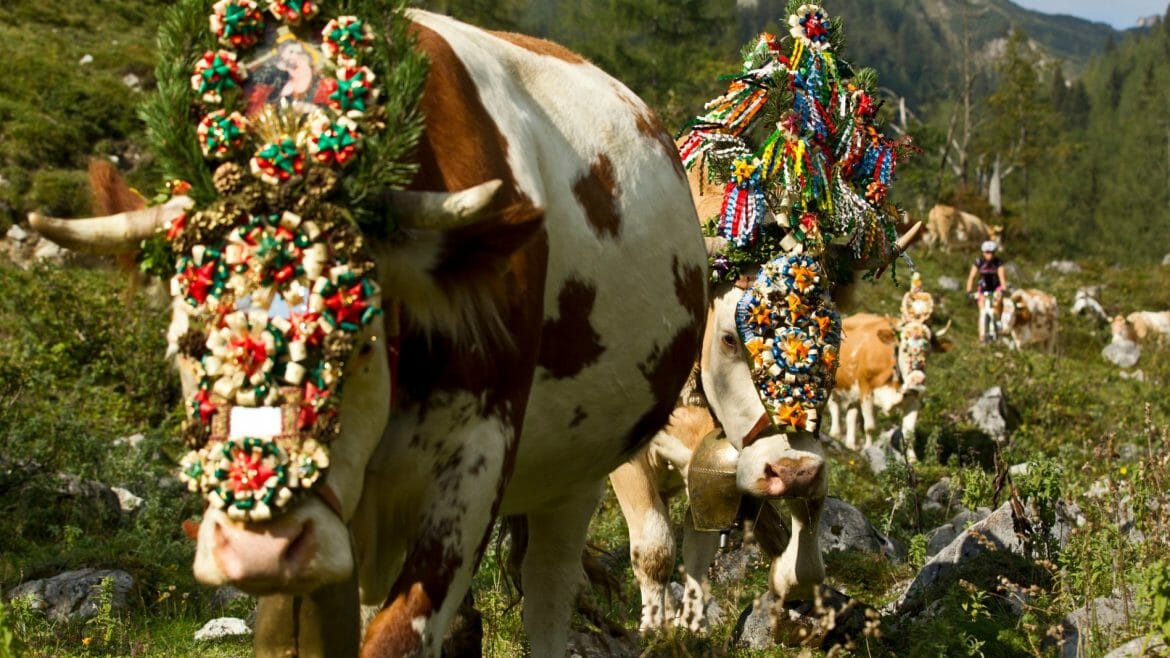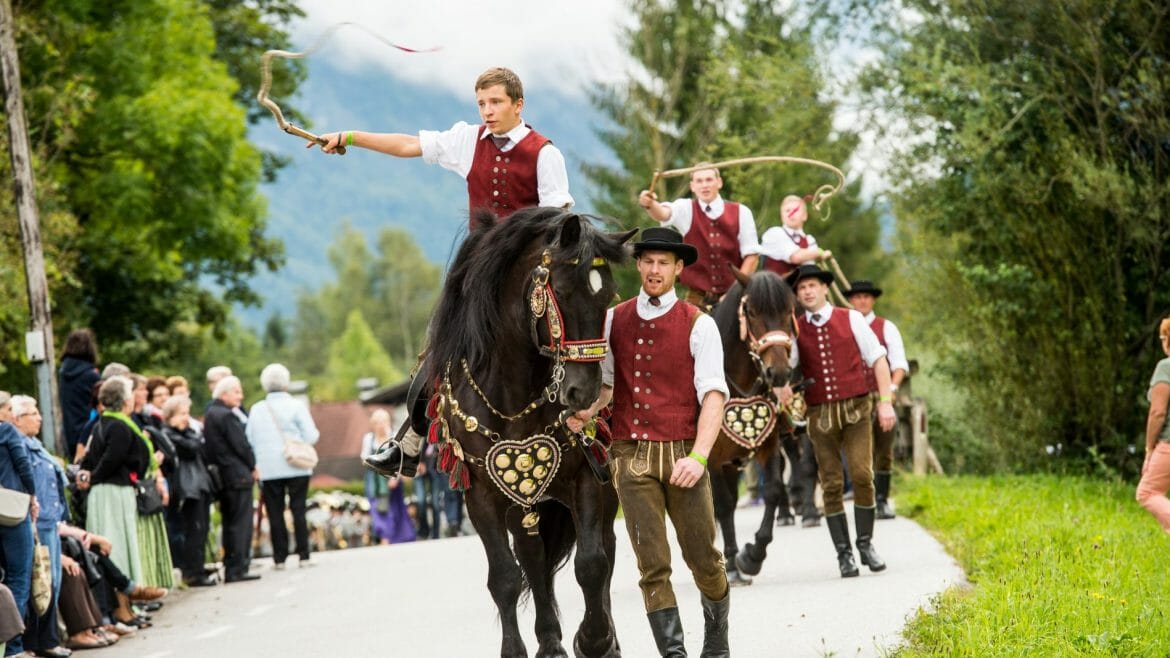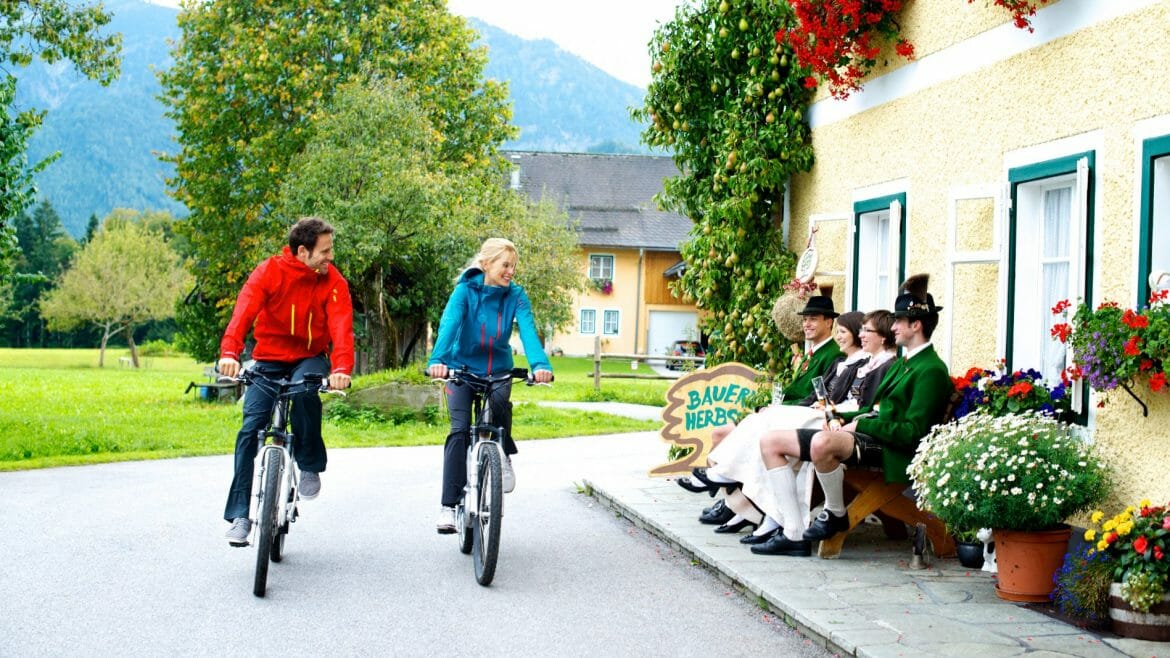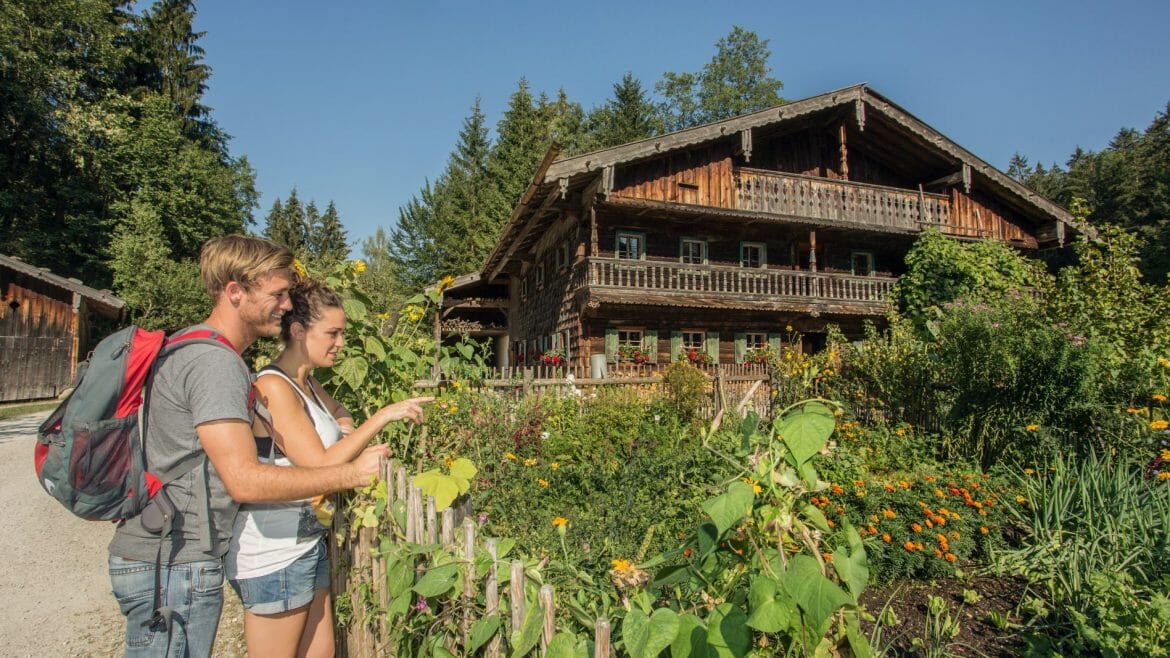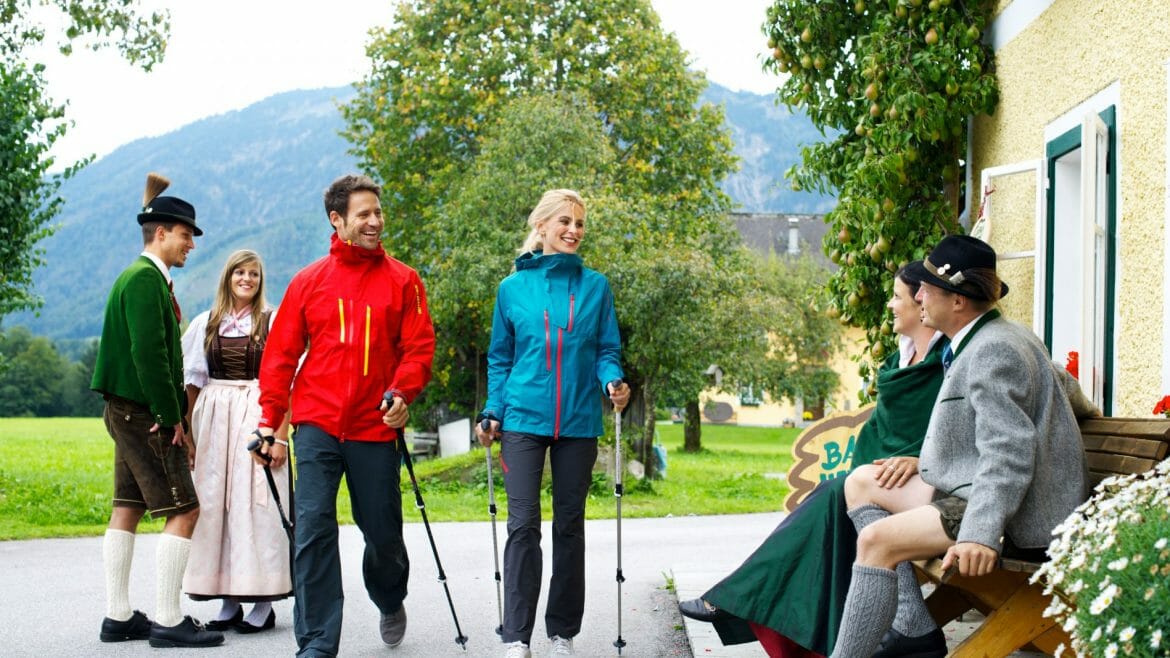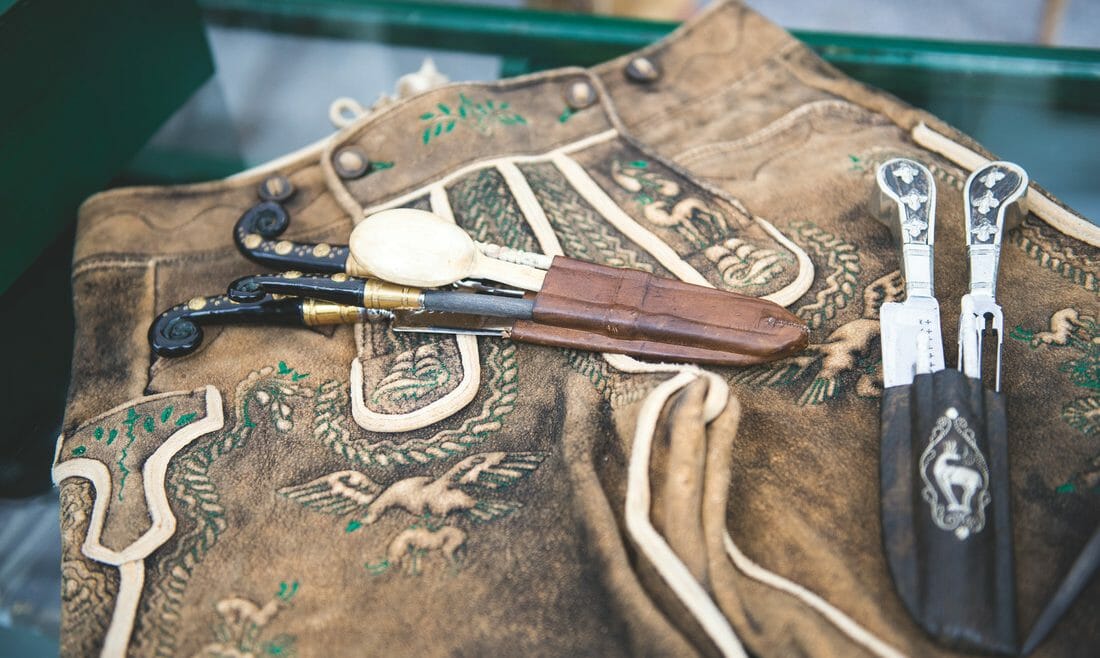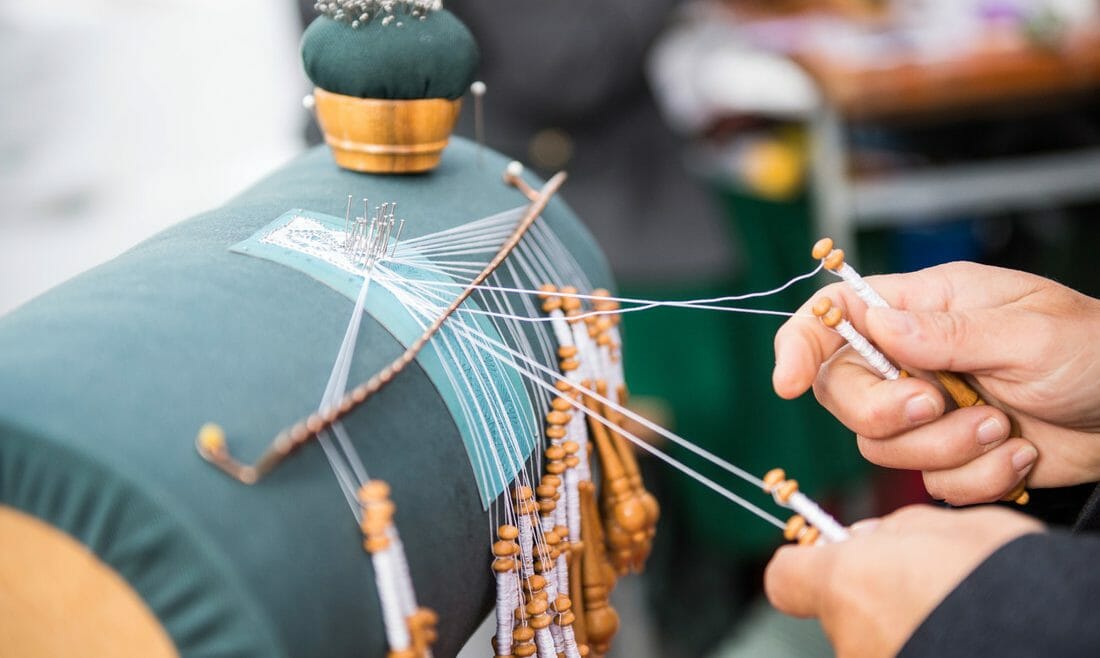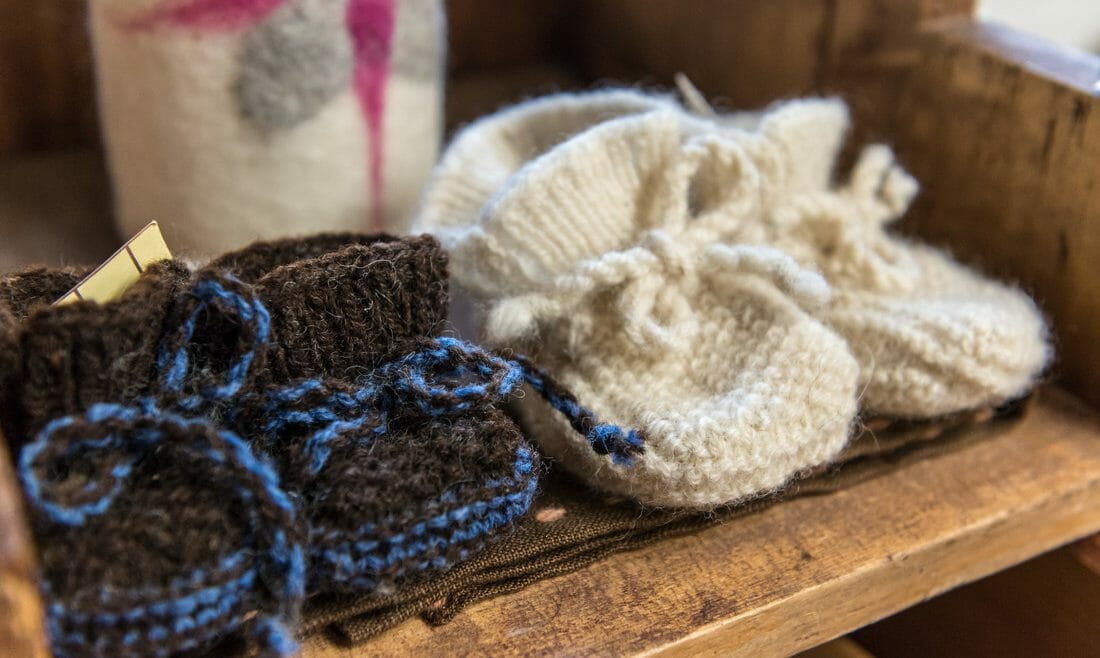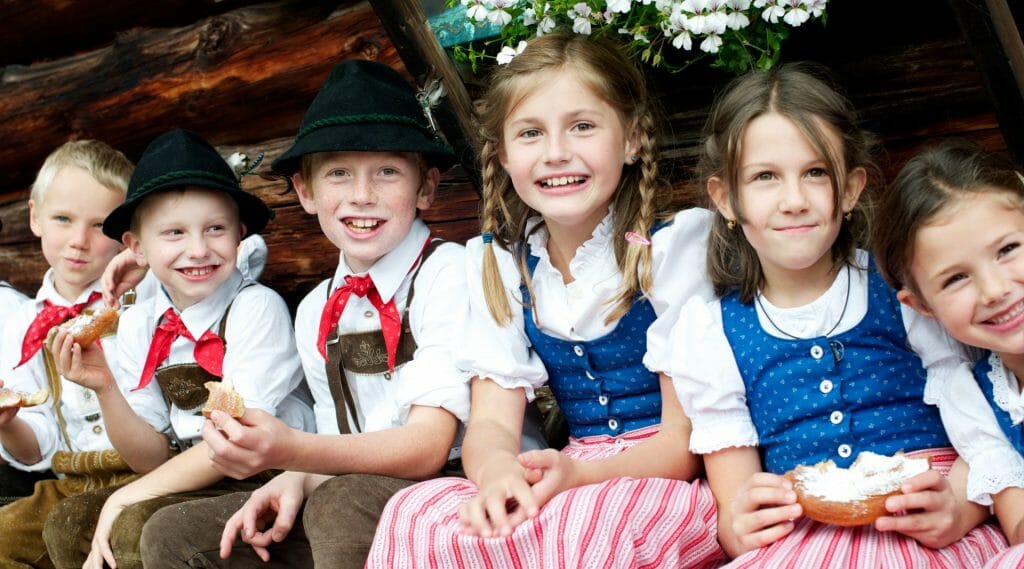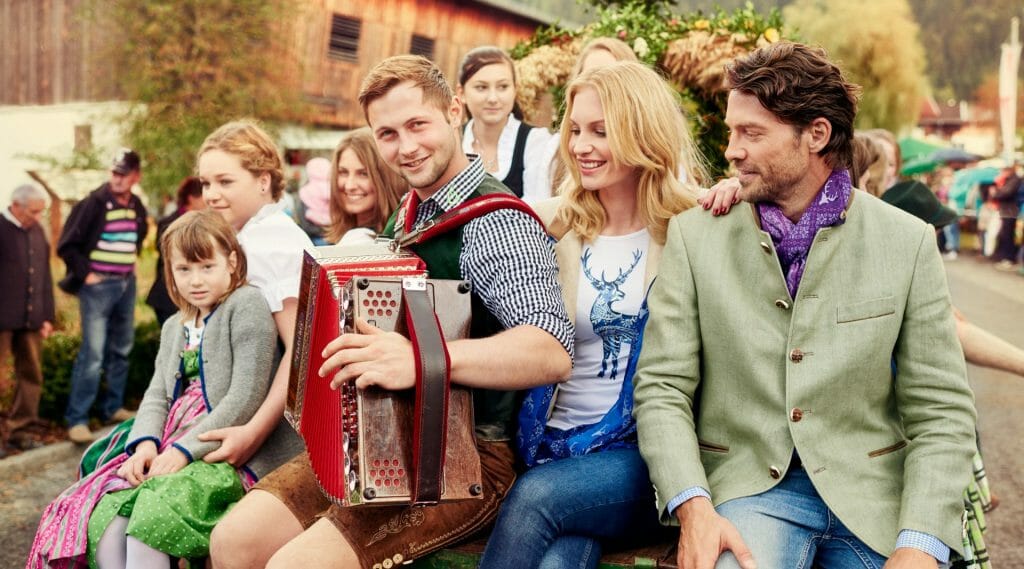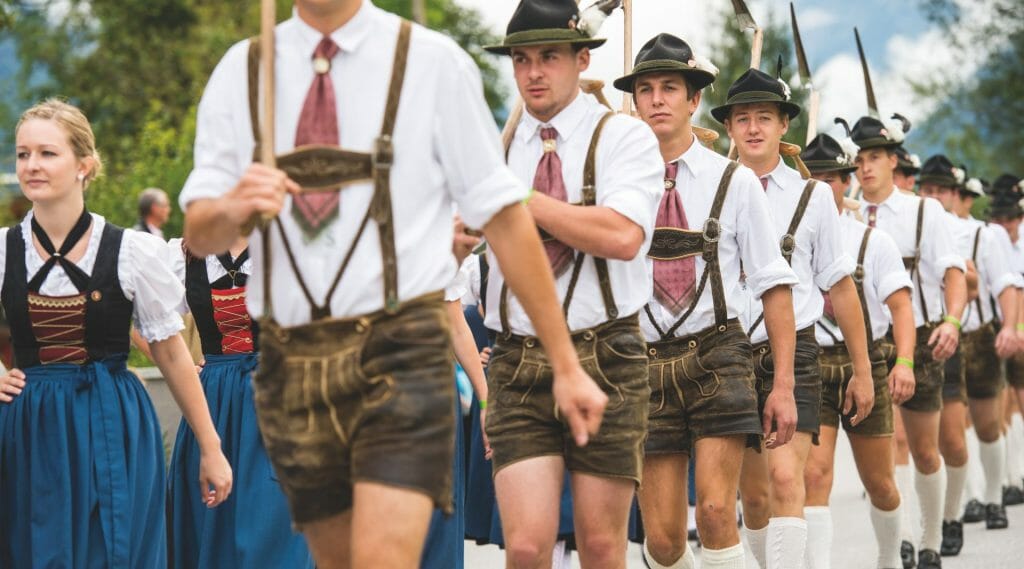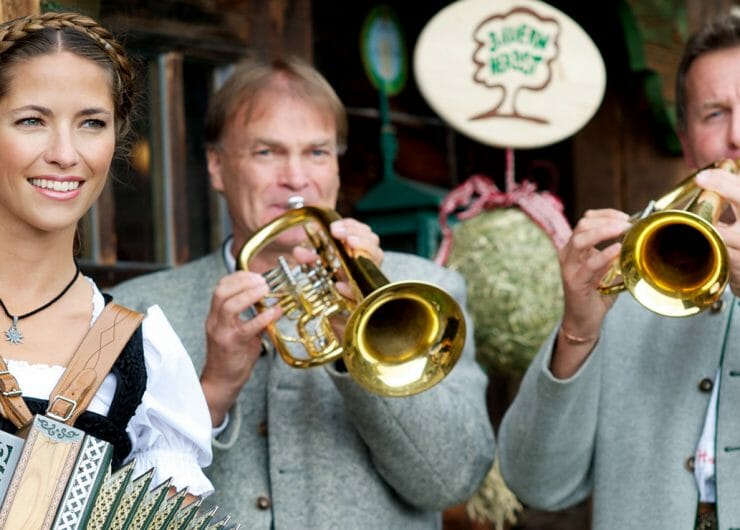
At the end of August, the 5th season starts in SalzburgerLand – the Bauernherbst. It is the time to collect and process the harvest, a time of festivals, encounters and enjoyment. Here, you have the opportunity to get to know traditional peasant life with handicrafts, hikes, cooking classes, harvest festivals, Alpine cattle driving and traditional customs. Music, dance, good food, traditional costume, club life and craftsmanship are the focus.
The special time
After the Alpine summer, the herdsmen return to the valley with their cattle. Farmers go out onto the field one last time before winter to bring in the hay and harvest fruit, cereals or vegetables. Now is the time to process the harvest. Jams are boiled, juices are squeezed, fruit is macerated for making Schnapps and bacon and sausages are cured. All this freshly made produce is also taken by the farmers up to the numerous Bauernherbst markets, where it can be tasted and bought at the stalls. But the Bauernherbst is also an opportunity for the sociable “Hoagascht” (sitting together), dancing on the hay at the farm festivals, culinary delights and wearing one’s traditional festive costume.
Musical Bauernherbst
The Bauernherbst is brought to life musically by the folk musicians with their dulcimers, guitars and accordions, Alphorns, yodelling and “Gstanzlsinger”. From the official opening, via the farm festivals to the rustic Alpine dances with the Plattler on the Alpine summer huts. Real folk music sets the tone here! An atmospheric hike from Alpine pasture to pasture accompanied by music is unforgettable. These “Almroas”, such as on the Faistenauer Schafberg in the Fuschlsee region, combine an active experience of the Salzburg mountains with the finest musical enjoyment. You can also jump on your bike to visit one of the many musicians’ meetings on the Alpine pastures of SalzburgerLand.
Culinary Bauernherbst
Typical regional dishes from SalzburgerLand are on the menu of the Bauernherbst Hosts. Erdepfinidei, Salzburger Bierfleischknödel, freshly harvested Lungauer Eachtling, game dishes of venison or sweet farmer’s doughnuts, Apfelradl or Elderberry compote make this time a real culinary delight. After a good meal, a high-percentage finish normally follows with a freshly made farmer’s Schnapps. There is Rowanberry, Pear or Cranberry in addition to wonderful alcohol-free juices from Hollunder, Apple or Raspberry to be tasted also at the Bauernherbst stalls.
Traditional Bauernherbst
Lived tradition, customs and handed-down craftsmanship are important values, which are maintained within the Salzburg Bauernherbst and vividly presented to the guests. From the much admired Alpine cattle driving, when the festively decorated cattle return from their Alpine summer down to the valley, the creative hay figures, which characterise the entrance to the Bauernherbst towns, to cheerfully dancing shoe-plattler groups – the Bauernherbst provides all these ancient traditions a stage for cultivating folk culture.
Nature experience in the Bauernherbst
The golden light of autumn invites you for extensive herb hikes or walks to waterfalls through the forests of SalzburgerLand. The views are particularly clear and impressive in autumn. The peaks of the surrounding mountains seem to be within reach. It is now quiet on the Alpine pastures, because the cows are already back down in the local stables in the valley after the Alpine cattle drives. The Blackberries and Cranberries are ripe for harvest and serve the hikers on their fruity way up to the summit. Invigorating springs on the side of the road provide a refreshment and a trip into the forest gives strength for new deeds.
Craftsmanship in the Bauernherbst
Hand-made products are a precious commodity. In a time when everything can be made by machine, real craftsmanship triggers the highest admiration. “That someone can do that!” is how you look forward to watching the quill embroiderer guide a peacock feather through the leather or as the lacemaker weaves her thread into the finest tip. Or when the blacksmith so gently fits the massive Noriker horse with his horseshoes, or when bowls are turned out from pine wood, or the practical baskets from Alpine pastures and when sheep’s wool slippers are felted.
Traditional costume in the Bauernherbst
Everyone has their own costume – Dirndl and Lederhosen are inseparable from the Bauernherbst. Whether it’s a Bauernherbst host, an active participant in the traditional parades, a craftsman or a seller on the Bauernherbst stalls. Everyone wears their typical regional costume with pride. Each region has its own traditional costume and the young generation also finds great pleasure in the fancy Dirndl dresses and Lederhosen. The precious embroidery, such as the “burning Liab” on the Pongau traditional costume, the hand-embroidered flowers on the bodice of the Flachgau traditional costume or the ruffles on the body of the Lungauer Jahrgwandl let the costume connoisseur guess the origin of the wearer. More than 98 traditional regional women’s costumes are known in SalzburgerLand and all have one thing in common – a Dirndl ennobles every woman! The Salzburg Bauernherbst tells of… the return of the traditional costume.


